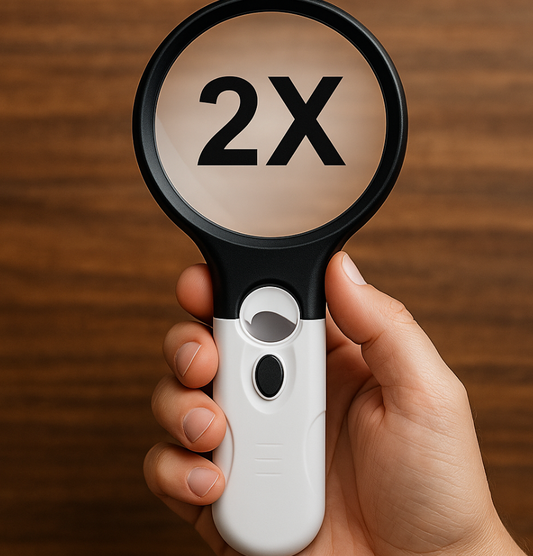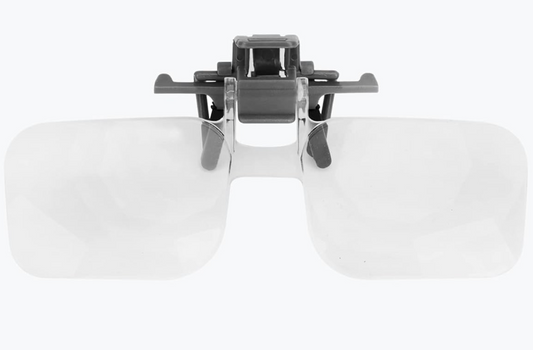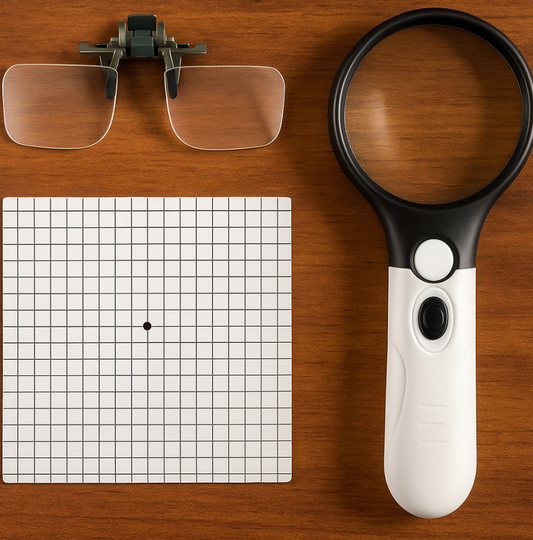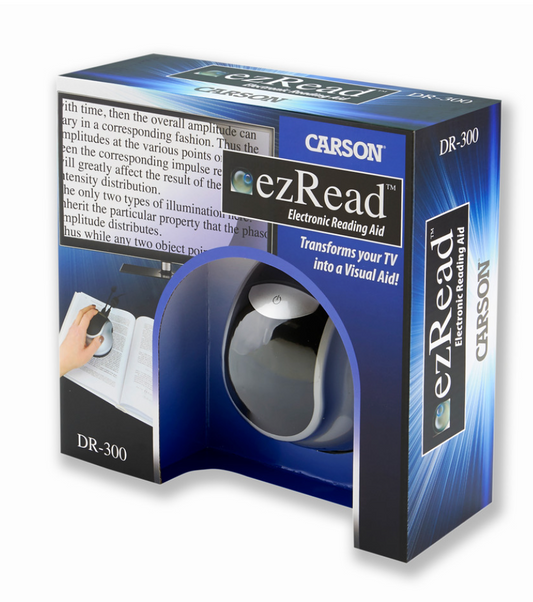Single Vision? Bifocals? Trifocals? or Progressives? Choosing what is best for you
Share
For patients with low vision, choosing the right type of eyeglass lens is essential to optimizing sight. The four main types of lenses—single vision, bifocal, trifocal, and progressive—each offer unique benefits based on an individual’s specific vision needs and lifestyle. Always have the discussion with your optometrist on how you can maximize your level of vision and which type of lens or lenses may be best for you.
It's not always a one size fits all, and many times have a second pair of glasses for driving or reading in addition to a progressive is beneficial to patients.
Here’s a breakdown of each type, focusing on how they serve low vision patients.
Single Vision Lenses
Single vision lenses are designed to correct one field of vision—either near, intermediate, or distance. For patients with low vision who struggle primarily with one focal point, such as reading up close or seeing at a distance, single vision lenses provide clear, customized correction for that specific range. They are straightforward and effective, making them ideal for people with minimal focal issues or those who want a dedicated pair of glasses for one task, like reading or driving.
Benefits for low vision patients:
- Simple to use, as they focus on one area only.
- Often lightweight and easy to wear for extended periods.
- Ideal for people needing consistent vision correction in one range, reducing eye strain and enhancing visual clarity in their preferred focus area.
Bifocal Lenses
Bifocal lenses correct two focal points: distance on the upper part of the lens and near vision on the lower part. They are distinguished by a visible line that separates the two focal segments. For patients with low vision due to conditions like presbyopia (age-related farsightedness), bifocals allow for easy transition between tasks such as looking up to watch TV and then down to read a book. However, bifocals don’t offer an intermediate range, so they may be less helpful for tasks like computer work.
Benefits for low vision patients:
- Convenient for those needing both near and far correction in one lens.
- No need to switch between different pairs of glasses for daily tasks.
- The distinct line provides clarity in knowing where each focal point begins, reducing confusion for some users.
Struggling at intermediate distance with your current bifocal? Check out our 2X flip up magnifiers that work with nearly any frame.
These are a game-changer for anyone who wears lined bifocals and struggles with that tricky intermediate range vision. These lightweight, hands-free magnifiers easily clip onto most glasses, giving you the extra boost needed to see clearly at arm’s length. Flip them up when not in use, and enjoy enhanced clarity exactly where you need it most!
Trifocal Lenses
Trifocal lenses go a step further than bifocals by adding an intermediate focal point between the near and distance segments. This middle range is beneficial for activities that fall between close and far distances, such as working on a computer or looking at objects across a room. Trifocals can greatly enhance a low vision patient’s ability to smoothly shift focus between tasks without needing multiple pairs of glasses.
Benefits for low vision patients:
- Offers correction for near, intermediate, and distance vision, covering a broader range of activities.
- Reduces eye strain by allowing smooth transitions between focal points.
- Provides more flexibility for those who engage in a variety of close, mid-range, and distance tasks.
Progressive Lenses
Progressive lenses are multifocal lenses that gradually change in power from top to bottom, eliminating visible lines between focal points. They provide a seamless transition between near, intermediate, and distance vision, closely mimicking natural eyesight. For low vision patients with presbyopia or those needing assistance across all distances, progressives allow clear vision at various ranges without the interruption of distinct focal lines.
Benefits for low vision patients:
- Natural, gradual transitions between all vision ranges.
- Aesthetic appeal, as they lack the visible lines of bifocals and trifocals.
- Enhanced functionality for patients who perform activities at various distances, like reading, working on a computer, and engaging in social activities.
Conclusion
The choice between single vision, bifocal, trifocal, and progressive lenses depends on a low vision patient’s specific needs. Single vision lenses provide focused correction for one range, while bifocals and trifocals serve patients needing multiple focal points with distinct lines. Progressives, on the other hand, offer smooth transitions for a more natural visual experience across all distances.
Each lens type has unique benefits, and the right choice can significantly improve comfort and functionality in daily life.



